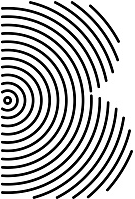Note / Class Reading 1: Digital Liveness
I had a feeling that Writing for Electronic Formats was going to have an academic bent, so I wasn't surprised when our workshop instructor, playwright Erik Ehn, sent us two academic papers to read before our first day of workshop.
This is my reading of the shortest of the two essays, "Digital Liveness: A Historico-Philosophical Perspective" by Philip Auslander.
Now I take a dim view of overly serious pontificating on creativity, but I was, at one time, an overly serious English major with a big crush on a handful critical theorists, so I can play along.
In short, Auslander's point is that the same amount of care must be taken with a digitally mediated experience intended to feel like a live interaction as one takes with other types of storytelling in which the plight of, say, Peter Pan, must feel present and real.
In other words, the technology to maintain the illusion must be up to snuff.
In addition to this baseline requirement, the audience must proffer its willing suspension of disbelief, a middle-school term that Auslander jumps through citational hoops to avoid because he'd rather say this:
"Gadamer argues not only that the work of art makes a claim upon us but also that in order for a work to be meaningful, we must experience it as contemporaneous, a term borrowed from Kierkegaard that Gadamer construes as meaning "that this particular thing that presents itself to us achieves full presence, however remote its origin may be."”
Let's break that down. The work of art must...
"...make a claim upon us" = It needs uphold its side of the illusion
"...achieve full presence, however remote its origin may be" = We need to believe in the illusion.
The most interesting part of this essay arose in the premise of the argument and went mostly unexplored: Liveness is not a static concept ("ontologically defined"); instead, it can only be understood in terms of contemporary definitions (in Auslander's words, it's "a historically variable effect of mediatization.")
It's a fancy way of saying that, as interactive technology improves and art continues to challenge the concept, what constitutes a "live" experience changes over time.
The invention of the gramophone was not the invention of the "live vs recorded" dichotomy. For the home audio enthusiast of 1900, the quality and experiential gaps between live and recorded music were so large, the distinction didn't matter.
Instead, it was the widespread adoption of radio some 30–40 years later that the distinction started to matter. Radio audiences felt that a live broadcast was vastly superior to a recorded performance, so the distinction had to be made explicit. (It was actually legally required in the UK.)
Then Auslander cites Brian Winston, a historian of media technologies, who holds to criteria for a new medium to develop:
One must have the idea for a new medium and the science must be mature enough to pursue it. (Thanks for pointing out that a requirement of inventing something is inventing it.)
And society must then demand the experience (for those of you who prefer obtuseness, "a supervening social necessity for [the new medium] is perceived, and it is selected for investment.")
I think that the second bullet is the most interesting challenge for writers to consider. The technology is largely out of our hands, though we can play our part in dreaming it up.
But dramatic writers are the marketers of human psychology, and as marketers, it's our job to make novel experiences of human psychology accessible.
So summing up:
Just as we must do the work in believing that Ted from homeroom is Romeo, we must do the work in believing that a chatbot in an interactive game is the digitized brain of my dead wife.
To get to that point, the technology must be sufficiently awesome and the culture of storytelling must change to accept new types of experiences.
To learn more about how fiction and dramatic writers are inventing future forms, subscribe to Writers in the Metaverse.
Appears in
